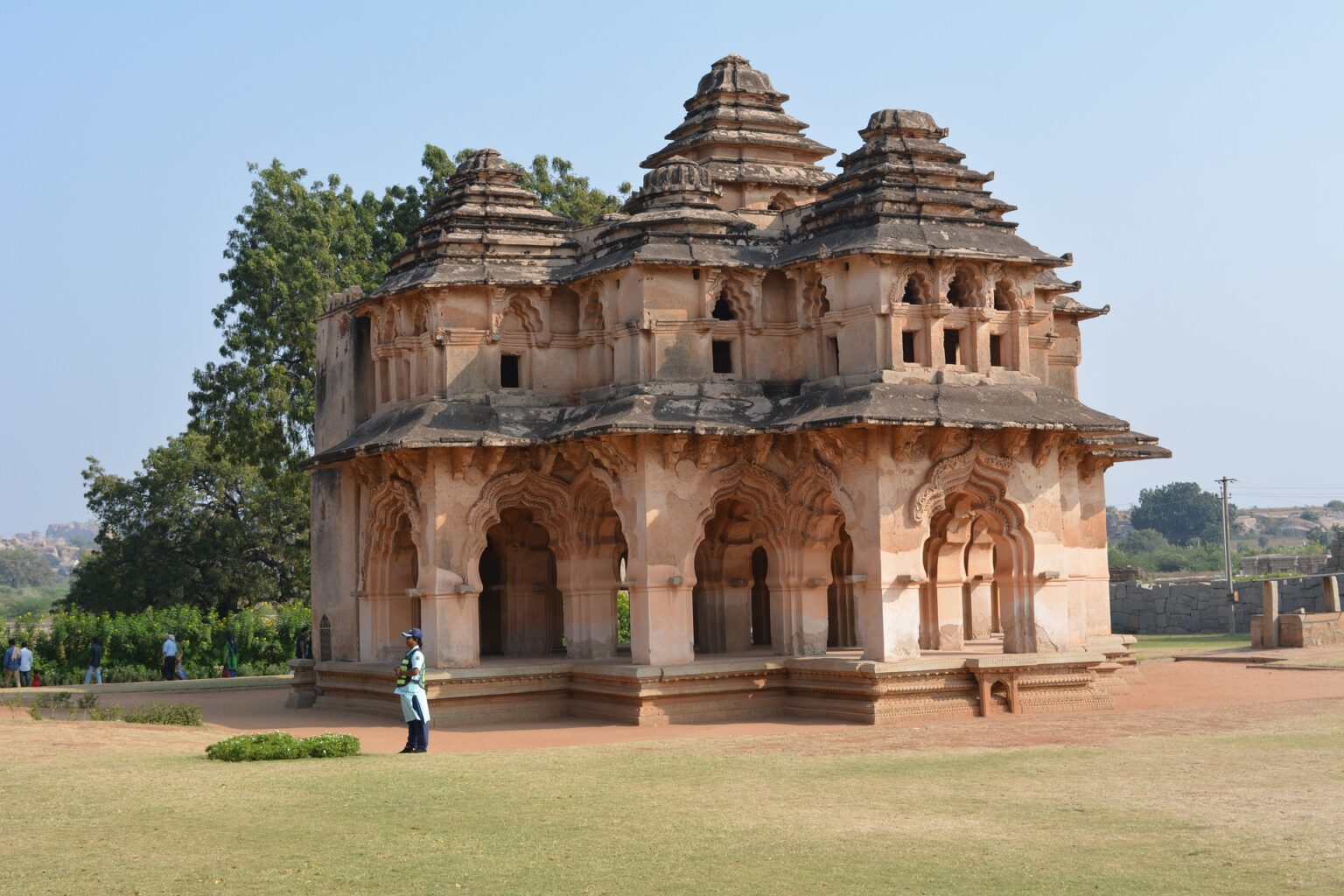Step back in time and immerse yourself in the majestic world of ancient ruins in Hampi, a UNESCO World Heritage Site located in the Indian state of Karnataka. This archaeological treasure trove is a testament to the rich history and grandeur of the Vijayanagara Empire, which thrived from the 14th to the 16th century. Prepare to be awe-struck as we delve into the wonders of Hampi and explore its captivating ruins.
Nestled along the banks of the Tungabhadra River, Hampi is a sprawling site spread over an area of 4,100 hectares. This once-thriving capital city of the Vijayanagara Empire was known for its opulence, architectural brilliance, and commercial prowess. Today, it stands as a mesmerizing blend of ruins, temples, and ancient structures that continue to draw history enthusiasts and curious travelers alike.
The first thing that strikes you upon arrival in Hampi is the sheer scale of the ruins. As you wander through the vast landscape, you will encounter a myriad of architectural wonders that depict the grandeur of a bygone era. The Virupaksha Temple, dedicated to Lord Shiva, is a prime example of the meticulous craftsmanship that was characteristic of the Vijayanagara Empire. Its towering gopuram (gateway) intricately adorned with sculptures and carvings leaves visitors in awe.
Another iconic site in Hampi is the Vitthala Temple, a magnificent structure that showcases the pinnacle of Vijayanagara architecture. The temple’s famous stone chariot, reminiscent of a grand royal carriage, is symbolic of the empire’s opulence. Inside, you will find a musical pillar that produces melodious sounds when struck, a testament to the engineering genius of its creators. The temple’s exquisite stone carvings and pillars, depicting mythological stories and celestial beings, transport you back to a time of artistic splendor.
Aside from temples, Hampi is also home to numerous palaces, pavilions, and monuments that add to its mystical charm. The Queen’s Bath, an ornate bathing complex, perfectly exemplifies the architectural brilliance and attention to detail of the Vijayanagara Empire. Its symmetrical arches, domes, and exquisite carvings evoke a sense of regal grandeur. As you explore the remnants of the royal quarters and the Hazara Rama Temple, adorned with intricate friezes depicting scenes from the Ramayana, you can’t help but wonder about the lavish lifestyle of the ancient rulers.
Beyond the grandeur of the monuments, Hampi is also a treasure trove of historical tales and legends. The ruins of the Hampi Bazaar and the Old Palace area offer a glimpse into the vibrant marketplace and administrative hub of the past. The Elephant Stables, a long row of domed chambers, once housed the royal elephants and served as a testament to the empire’s military might.
Hampi is not just about grand structures; it is also surrounded by natural beauty that adds to its allure. The iconic Matanga Hill offers panoramic views of the entire Hampi landscape, allowing visitors to soak in the ancient ruins against a backdrop of rugged hills and endless fields. Sunset and sunrise are particularly enchanting from this vantage point, painting the sky in hues of orange and pink.
To truly appreciate the magnificence of Hampi, it is worth taking the time to explore some lesser-known gems. The Lotus Mahal, an elegant two-storied palace with arched corridors and balconies, offers a glimpse into the exquisite architecture and leisure activities of the past. The beautifully sculpted monolithic statues of Ugra Narasimha and Badavilinga, carved from single pieces of stone, are awe-inspiring examples of the empire’s artistry and devotion.
More: Read about temples of Hampi
As you traverse the ruins of Hampi, it is impossible not to be captivated by the aura of the place. The silence and serenity bring the past to life, transporting you to a time of glory and splendor. The intricate carvings, majestic structures, and the rich history embedded in every stone make Hampi a destination like no other.
A visit to Hampi is not just about exploration; it is a journey of self-discovery and an opportunity for cultural enrichment. The ruins of Hampi foster a deep appreciation for our heritage and remind us of the achievements of our ancestors. Beyond the historical significance, the site instills a sense of wonder, ignites the imagination, and leaves an indelible mark on every visitor.
To make the most of your trip to Hampi, it is advisable to spend at least a couple of days exploring the vast archaeological site. Engage the services of a knowledgeable guide who can unravel the mysteries and legends associated with each structure. This will help you understand the historical and cultural significance of the ruins and enhance your overall experience.
More: Wanted to download Odisha Magazines, visit here
Hampi is truly a living testament to the grandeur of the Vijayanagara Empire and is deserving of its UNESCO World Heritage Site status. It is a place where ancient history comes alive, drawing you into its enchanting realm. So, lace up your walking shoes, grab your camera, and set off on a once-in-a-lifetime journey to explore the ancient ruins of Hampi.
FAQ For Explore The Ancient Ruins of Hampi
Q: Where is Hampi located?
Hampi is located in the northern part of Karnataka, India.
What are the ancient ruins of Hampi?
Hampi is home to the ruins of the Vijayanagara Empire, once a flourishing kingdom in the 14th-16th centuries. The ruins include temples, palaces, marketplaces, and various other structures.
How can reach Hampi?
The nearest airport to Hampi is in Bellary, approximately 60 km away. Alternatively, you can reach Hampi by train or bus from various cities in Karnataka.
Are there any accommodations available in Hampi?
Yes, there are numerous guesthouses, homestays, and hotels available in Hampi catering to different budgets. It is advisable to book in advance during peak tourist seasons
What is the best time to visit Hampi?
The best time to visit Hampi is during the winter months between November and February, as the weather is pleasant and most suitable for exploring the ruins.

